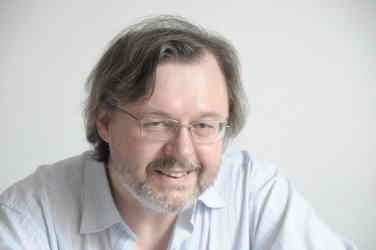Let us consider the possible evolution of the biosphere as a whole.
It's hard to think of it in traditional terms of competition between many,
because our planete obviously do not compete with other planets in time scale,
in which the earth's biosphere as a whole do evolves.
At first sight a suggestion suffices the planet evolves as a whole,
just because parts of it (subsystems) evolve. We'd like to look at it
in more details yet.
The exponencial growth (especially the economical growth, we seem to experiece
and urge for) is not just a bad habit, which people could ovecome, if we were
moraly stronger as
Club of Romein it's
Report
suggests. It is on most cases the consequence of feedback mechanisms. Some
feedbacks we can define and create, some other we may dissolve, but the strongest
emerge totally beyond our control.
In the following I'd like to present three thesis:
- Some global circulations (money, trade, internet are examples) may grow due
to feedbacks far beyond any human consciuos intensional control and work well,
which means to stabilise ressources (like climate)
(23)
| |
This is the
contrary to the Club of Rome suggestion, in which such growth inevidently leads
to explossion, desaster and collaps. |
|
.
- The evolution, which traditionally regard many organisms may regard also
one organism. One organism may evolve on his own without others in the sense
it grows in complexity and selfcontrol.
- The emerging global system tries to map all features of human psychic
by challening us.
The way out seems to be to consider elements of all positive feedbacks
which bound the biosphere more and more. Yet now these elements between
which feedbacks are tied are not only individual organisms, but rather
whole populations and other biophysical aggregations like woods, savannas,
oil deposites, elements of weather, etc. Obviously we humans play a
mediating role in tighting these elements together e.g by human trade.
Let us consider these ties chaotic and without any rule in the first
approximation and let us ask which ties will ovehelm after some time.
Obviously circulus with positive feedbacks will decide what will happen.
If our planete sucesses (possibly with a human help as a mediator) to
stabilise the clima and the environment we could truely be witnessing the
birth of some new (global) mechanism. As it is made of interrelated
organized parts we are allowed to call it an organism.
At this stage there is no matter how this stabilisation is achieved
in smaller details. The only parts we consider are elements constituting
positive feedbacks.
Yet an important element of it's self-reference is still lacking.
This system does not know well enought itself to provide
stability. Without such self-knowledge no true feedback link
seem to be possible and it will decay by itself
while destroying our environment and possibly us humans too.
The challenge to the humanity stresses the fact that
left alone this system seems aquiring the knowledge
of human sociology by testing. Why ?
- Just because it's the next possible closing loop.
